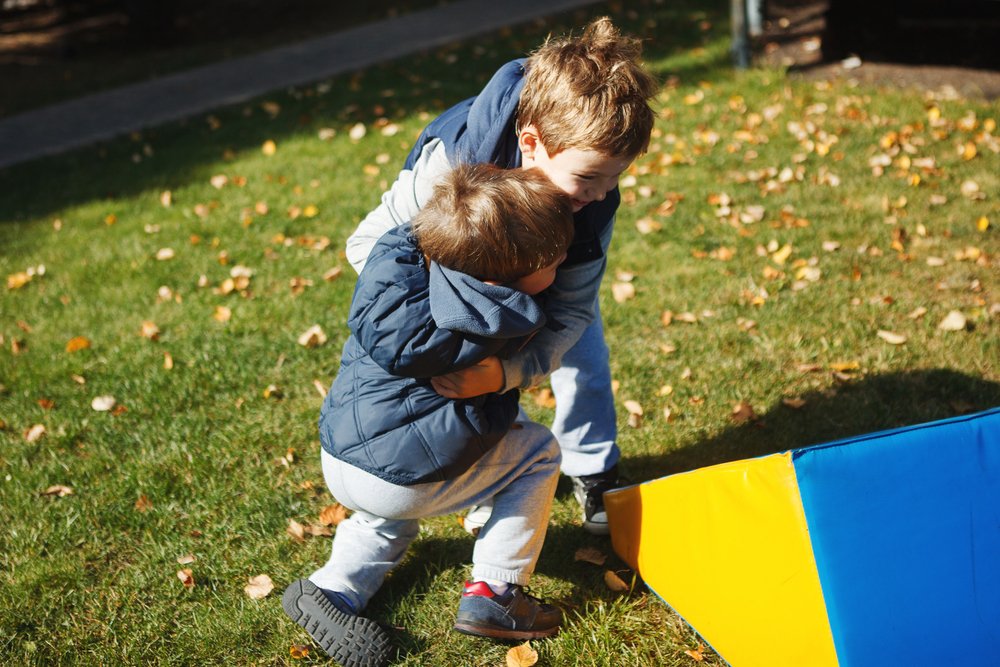Key points:
- Your role as a parent is crucial in teaching your child effective communication, empathy, and self-regulation. Through your guidance and support, your child can develop essential skills for future personal and professional relationships.
- Lead by example, identify triggers, be consistent, avoid negotiation, offer positive feedback.
- If aggressive behavior persists for an extended period, or if you find it challenging to manage on your own, consider seeking professional guidance. Professional assistance can provide insights and strategies to address aggressive tendencies in your child.
In part 1 of this article, we talked about the strategies you can use when you find yourself in a situation in which your child presented an aggressive behavior. Some signs of this include hair pulling, biting, pushing, or hitting. In this article we’ll talk about what you can do to shape your child’s behavior and minimize these situations.
Every child is different and, like in every aspect of development, aggressive behavior presents differently in each child. The most important thing is that you provide your child with the tools they need to understand and modify their behavior. This will not only foster self-control, but it will also help them resort to more assertive ways when expressing their thoughts and feelings. This will also foster their self-awareness, emotional intelligence, thinking skills, and growing empathy; skills they’ll need throughout their life and in future relationships.
1. Start with yourself. Previously we talked about how your little one wants to be like you and how you are their role model. You can’t expect your child to control themselves if they are constantly exposed to yelling and frustration. Your calm presence, even when they are mad, makes them feel safe and fosters their emotional regulation.
2. Notice the triggers. Is the behavior more common before or after nap time? Was your little one hungry? Does it always occur with the same group of friends or one person in particular? Is it only happening in one setting like home, the childcare, or during playdates? Could it be something happening in the environment (e.g., too crowed)? Had there been any recent big changes in their life (moving, changing rooms, etc.)?
3. Be consistent. Not changing the rules requires an extra effort from all of your child’s caregivers, so avoid the “good cop, bad cop” routine with your partner. Shaping your little one’s aggressive behavior requires patience, thought, empathy, and loving words and it’s not going to take on the first try. There’s no use in taking time to explain calmly and firmly that pushing is wrong, if your little one feels they can just do it when you are not around. In part 1 of this article we mentioned using short and firm messages with a gesture to communicate that what they did was wrong. Use the same combination of words and gestures every time. Your child is learning how the rules and limits work, so the best thing you can do is be consistent and not change them.
4. Avoid negotiation. This one might be hard. You want your little one to feel heard and see you as a good listener, but negotiating about limits and rules can be a slippery slope. Having firm limits helps them understand how the rules of living work, makes them feel secure, and brings structure and logic to their world.
5. Make time for reading. Books are a great way to help reinforce positive behaviors and learning about why hurting other’s is not nice.
6. Plan ahead. If you know your little one is shy when meeting other people, it might be good to start flipping through a family album before taking them to that big family reunion. If you know your little one is super special about a truck and they’re going on a playdate, bring an extra one so that you can suggest they offer that one to their friend and avoid a fight.
7. Give notice. “Five more minutes of playtime and it’s shower time, which toy would you like to take to the bath today?”, “One more story and we’ll need to get ready to go, which one do you want to read?”, “Five more minutes before going to grandma’s, what game would you like to play on the way there? How about I spy?”. Letting them know that the activity they’re doing is coming to an end might make them feel more secure and in control, and it will probably avoid an outburst.
8. Give positive feedback. Praise your child for their appropriate behavior whenever they resorts to non-aggressive tactics. This will foster their self-esteem and emotional intelligence.
When to seek help?
If your child’s behavior seems to be unusually aggressive for more than a few weeks, you feel that you can’t cope with it on your own, or you are avoiding having them play with other children, it might be best to seek professional guidance.
Remember that your little one is learning to communicate and has still yet to discover what self-regulation looks like. With your example, kind words, and support you’ll teach them all about empathy and finding ways to express themselves without resorting to aggression. Eventually they’ll be an expert in sharing, cooperating, and working well with others; essential skills they’ll need in their personal and professional future.








